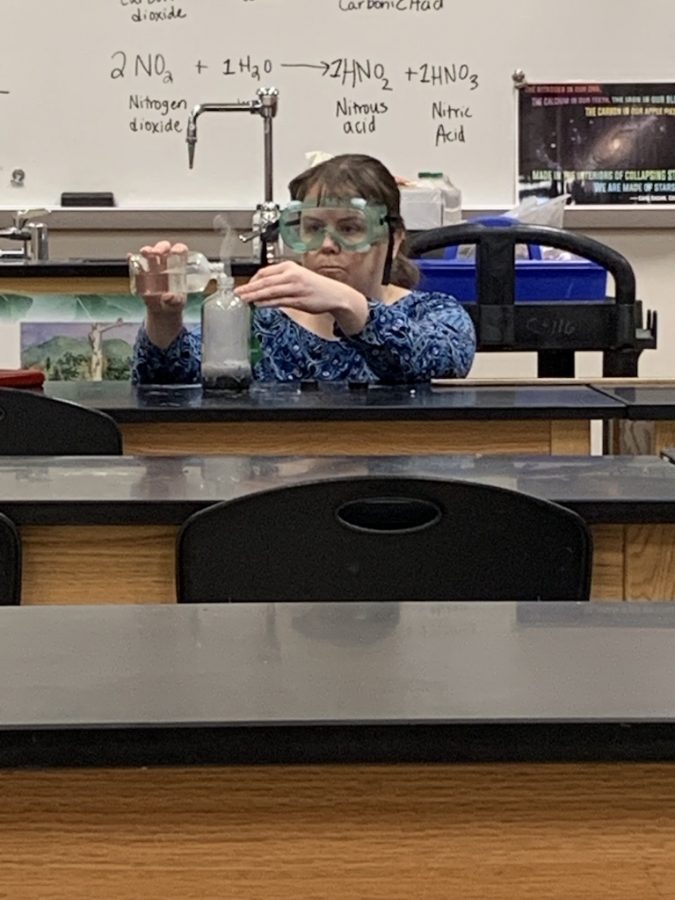Environmental Science class creates a flammable synthesis reaction
Mrs.McCauley makes hydrogen by pouring hydrochloric acid over zinc.
January 15, 2019
On January 9, Mrs. Amber McCauley performed an experiment for her Environmental Science class that created a synthesis reaction.
A synthesis reaction is a reaction in which multiple reactants (or in this case, hydrogen and oxygen) combine to form a single product (water). Synthesis reactions release energy in the form of heat and light, so this reaction is exothermic.
The experiment produced hydrogen by pouring hydrochloric acid over a beaker filled with zinc. The top of the beaker was covered with a balloon to capture the hydrogen. In order to incite a reaction, the mixture needed to be heated while combining the reactants.
Oxygen is already in the air so after lighting the balloon, heat is produced which pops the balloon and combines hydrogen and oxygen in the process.
This reaction also makes a ball of fire due to the oxygen which is why students had to stay a safe distance away from the experiment.
If you found this experiment interesting, you should consider taking Environmental Science. For more information, stop by Mrs. McCauley’s class in room A118.






